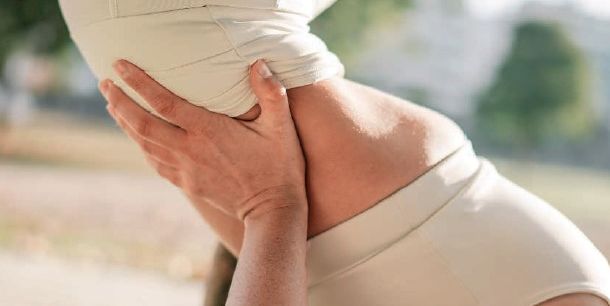Despite my lack of personal interest in physical activity, the desire to try Pilates has been buzzing in my head for many years. It could be Kim Kardashian and Belen Rodriguez’s Instagram stories about the reformer, the TikTok trend before and after workouts, the incessant spam about online Pilates classes on the wall, or it could be that age is approaching 30 with next to nothing, at least , not desirable for physical health, but in the end that’s what happened. During lockdown I tried out mat training thanks to some YouTube tutorials, then joined a Virgin Active gym where I activated a subscription which included a reformer and mat lessons. After almost a year of Pilates, my assessment is positive: I feel more connected to my body, I have strengthened my muscles, improved my posture, and toned my legs, stomach and arms. But while Pilates remains one of the few physical activities that doesn’t make my stomach hurt just thinking about it, it still leaves me wondering: Is it really as amazing as they say it is?
Physical Benefits
Massimiliano Mantovani, physician and sports surgeon, explains that Pilates strengthens and stabilizes the so-called “core”, the muscular complex present at the level of the abdomen and lower back, which is the fundamental support of the spine. So the first benefit is posture. Even professional athletes have adopted this workout because it allows them to perform certain technical movements optimally. Maria Celeste Sammarco, Virgin Active trainer, also emphasizes its tonic power: “Muscles are strengthened and lengthened, giving visible results after just ten sessions.”
Psychological aspects
According to Sammarco, the reason Pilates is so popular among celebrities, apart from the toning work, lies in the psychophysical well-being that can be obtained after the class: “If I had to describe the benefits of Pilates in three words, I would say: increased self-esteem.” In fact, Stefania Ortensi, a doctor specializing in sports psychology, explains: “Pilates can be seen in all respects as a holistic activity aimed at creating harmony between mind and body, providing immediate psychological benefits after exercise in terms of relaxation and reduction of anxiety and stress. Because it involves performing exercises very slowly and precisely, it also brings those who do not enjoy high-impact activities, but prefer to experience sport as a moment to take care of their personal well-being, into a quiet and relaxing environment.
For many people, Pilates actually provides a mental break from anxiety and stress, with benefits similar to those of meditation. Its activity promotes the production of endorphins, hormones that act directly on the brain, causing well-being, euphoria and good mood. Several studies show how physical activity, such as Pilates, improves mental balance, sleep quality and self-esteem in people who practice it. Moreover, each physical exercise is associated with certain breathing exercises, which can be considered the link between mind and body and the first medicine that is at the disposal of each of us: breathing control not only improves the oxygenation of the brain, favoring the ability to concentrate. , but reduces tension, anxiety and stress.”
Who, how and how much
Pilates is an inclusive sport: as Mantovani explains, “except in rare specific cases, anyone can do it.” For Sammarco, the most important aspect during exercise is to focus on breathing and activating the pelvic floor, as improper rhythm can create harmful tension during the exercise. At the same time, it is important that the explanations of the leader of the lesson are direct and accurate, and his concern is aimed at protecting the cervical and lumbar regions. According to a Virgin Active trainer, the minimum frequency for a full workout is three sessions per week, with the ideal number being four: “When combined with a balanced diet, the Reformer is also ideal for those who want to shed a few kilos without necessarily adding cardio.”
Mat and the reformer: what is changing
“Mat training is a free body workout using aids such as an elastic band, a ring, a soft ball. It’s a job of perception,” Sammarco says. “It’s different on a reformer because the car is designed to flatten the body and accommodate its curves. There’s more support and there’s much less risk of injury.”
Limitations of Pilates
“I wouldn’t call them limitations,” Mantovani reflects. “Absolutely speaking, there is no perfect sport. But if I really had to point out some downsides, Pilates is an activity that is typically done indoors and where you don’t socialize or talk. However, everything else is there.”



